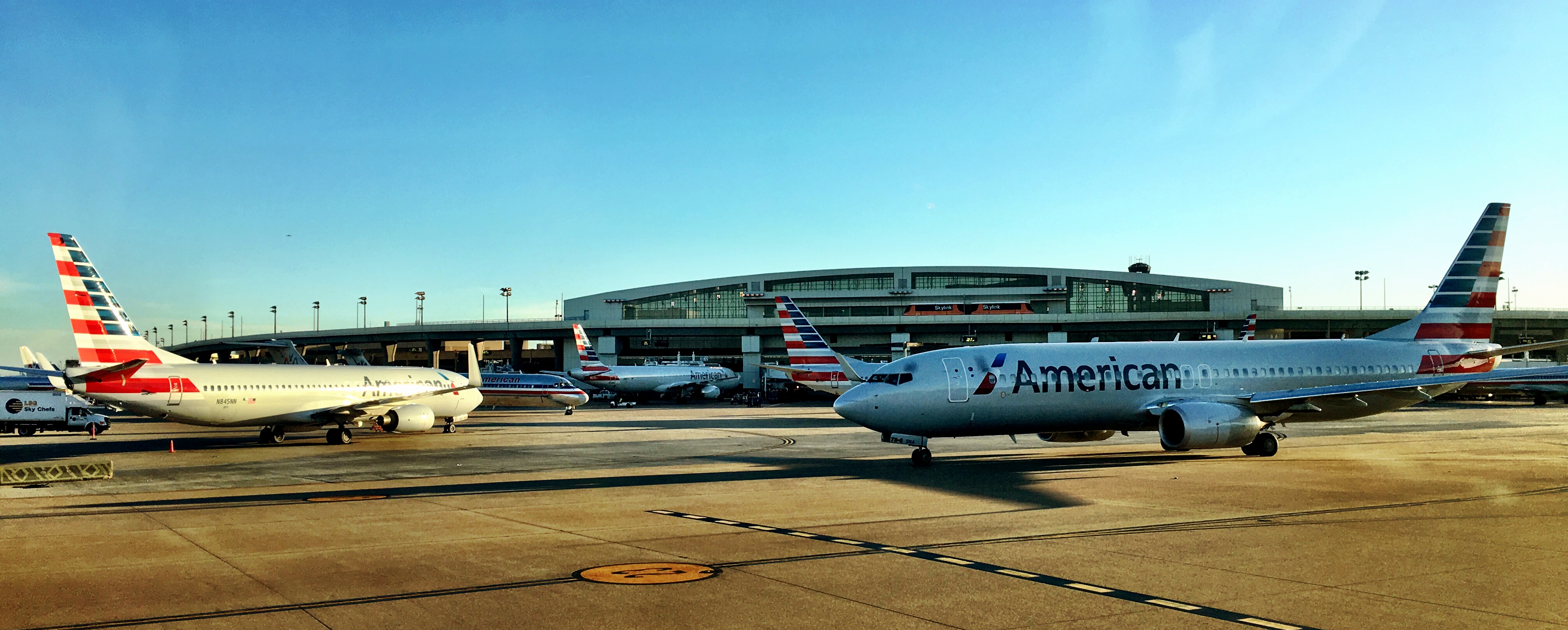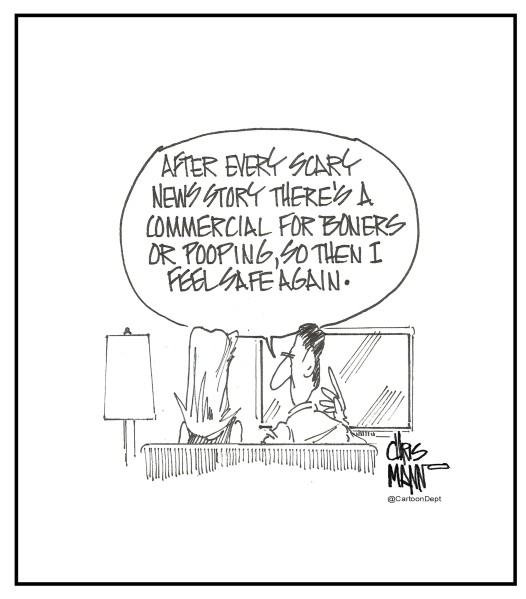
Here’s an excerpt from the true story, An Airline Pilot’s Life, scheduled for release in March from Dark Horse Books. This story puts you in the captain’s seat in the cockpit of the world’s largest airline.
In this excerpt, you’ll fly what turned out to be a hair-raising approach into a lifelong lesson you–and every pilot–will never forget. The book will be available on Amazon.com next month. Now, strap in and let’s fly.
Chapter __
“Maintain two thousand till established, cleared back course localizer runway three-two, contact tower,” the approach controller said in a bored monotone.
Ahead, the McAllen Airport crept onto my map display. My FO read back the instructions, then checked in with the tower.
“American 1410, you’re cleared to land runway three-two,” the tower controller said. “Previous arrival reported patchy fog over the south end of the field.”
That was the problem with McAllen Airport: they only had a non-precision approach—the back course localizer—for landing north. The descent minimums were much higher than on a precision approach, which meant if we didn’t see the runway at a higher altitude, we couldn’t land.
A precision approach like a Cat 2 would let us descend to a hundred feet, at which point we’d likely see the runway. We’d just flown a Cat 2 approach on a Charlotte turn before the McAllen flight due to fog in Charlotte. We were ready to do the same at McAllen, but the precision approach was only from the north end, and that approach would have a tailwind that was beyond our American Airlines limitations.
I’d called the dispatcher before we left DFW to discuss the runway conundrum: the only sure bet was a precision approach. But, as was typical of McAllen weather, the fog usually blew by in waves. If we were lucky, we’d reach the runway in a gap in the clouds. If not, we’d just go missed-approach and divert to our alternate. We’d planned to carry plenty of fuel for that.
After I talked with the dispatcher, I spoke with another captain, a former AirCal pilot I knew from my merger work a few years earlier.
“Yeah,” Steve said, shaking his head, “Fog in the Rio Grande Valley. We’re headed to Harlingen and the same low viz.”
“Well,” I said, “What’s your alternate? We’ll see you there.”
We both laughed, then filed out of Flight Operations for our departure gates.
After the approach clearance, I pressed the arming buttons for the Cat 2 approach, then glanced at the FMS (Flight Management System) “Progress Fuel Prediction” readout. I always did that when cleared for the approach to decide what our options were if we couldn’t land and went missed-approach. Options were all about fuel, which determined flying time available.
We were way ahead on fuel, meaning, we had much more than we needed to complete the approach, fly the missed approach and divert to our alternate and still land with extra fuel.
Knowing that the visibility at McAllen would improve and degrade in cycles, I believed we’d have enough fuel for a second approach, if we wanted to do that. Or, we could simply divert after the first unsuccessful. I wondered what Steve was doing on his approach into Harlingen, where the weather always seemed to match McAllen. That was why we chose San Antonio for an alternate rather than Harlingen, and so did Steve.
“Looking at the fuel,” I said cross cockpit and I pointed at the FMS fuel prediction, “We have enough fuel for a second approach, with clearance on request to San Antonio on the missed approach. Are you comfortable with that?”
“Comfortable” was the key word: not “okay,” which to me meant I can stand it but I don’t like it. “Comfortable” meant my FO felt there was no worries in the idea. And he agreed.
“In the event of a missed approach,” my FO told the tower, “We’d like vectors to a second approach, with clearance on request to San Antonio afterward.”
“I’ll relay that to approach,” the tower controller said.
As we neared our descent minimums, there was no telltale lightness or gaps in the fog—just depthless gray. I executed the published missed approach and as we climbed past the departure end, the fog vanished. We’d been a minute too early for the fog bank to blow by, but that was encouraging nonetheless because we’d possibly catch the gap on the next approach.
I glanced down at the fuel prediction once again before committing to the approach and also checked with my FO.
“Are you okay with another approach?” I asked. “We could just bail out to San Antonio now. It’s no big deal.”
But he agreed: we had enough fuel to fly this second approach, go missed-approach and fly to San Antonio and still land with extra fuel.
But, at the minimum altitude, we were still in thick gray fog. Again I executed the missed approach and my FO told tower, “We’re ready for clearance to San Antonio.”
The tower controller acknowledged the request and told us that departure controller was ready with that clearance.
We switched frequencies and as we climbed to our enroute divert altitude, the FO made contact with departure control.
“Climb and maintain ten thousand feet,” the departure controller said.
That would have to change. We’d planned a much higher cruise altitude to ensure a minimal fuel burn. With the ten thousand foot cruise altitude set in the FMS, the fuel prediction showed us to land with less than planned fuel.
Then the same laconic voice on departure control frequency stabbed me in the heart.
“Be advised that San Antonio is calling their ceiling and visibility zero,” he droned. “They’re not accepting arrivals. State your intentions.”
Just like that, we were instantly screwed and I knew it. The fog had rolled up the Rio Grande valley much faster than our weather shop and dispatch had predicted. I desperately needed that two thousand pounds of fuel we’d burned on the second McAllen approach, but it was long gone. And if we’d left those fifteen minutes earlier, we might have made it into San Antonio. There was no one to blame but myself, because I’d made the decision to fly that second approach.
“How’s the Austin ceiling and viz?” I asked the controller. Less than fifty miles more flying beyond San Antonio. If we could get a higher altitude, we might conserve enough fuel to land in Austin with an uncomfortably low fuel total, but what were the options?
“Their ceiling and viz are dropping rapidly,” the controller said. “You’d better plan minimum time enroute.”
We coordinated a higher altitude but the fuel prediction still showed a frightfully low fuel total at Austin—if we beat the fog rolling up from the south.
I’d failed Cecil’s second dictum, “Know when to get the hell out of Dodge.” If we couldn’t land in Austin, the next option was Waco almost a hundred miles north. That arrival fuel total would be horrifying, if we even made it that far at all. I’d relied too heavily on the FMS technology and not enough on my instinct, which usually was, there’s nothing you’re going to see on a second approach that you didn’t see on the first. Just get the hell out of town. The MD-80 didn’t even have a fuel prediction function.
There was no panic in the cockpit, though we both knew instantly what we were up against. There was just intense concentration, with an ample side order of tension.
We climbed into the twenties, then I had another critical decision to make. Do I pull the power back to an endurance speed that burned minimal fuel? That would add time to our transit, which could mean the difference between landing before the relentless fog bank swallowed up the field and having to race further north.
The longer we waited, the cooler the evening air would become, and that was the insidious culprit: the fog wasn’t really “moving north” so much as the temperature-dew point spread was diminishing as the sun set. When it reached zero, there’d be fog, from the surface to at least a thousand feet.
It was an all-in bet, keeping the engine power high to minimize enroute time, albeit at the expense of arrival fuel. The new landing fuel prediction was about half of what I’d normally accept, but the minimal time gave us at least a fighting chance to fly the approach and find the runway at descent minimums.
We entered a long, shallow descent toward the Austin airport. I held the speed at two-hundred-fifty until just about twenty miles out, then we “threw out all the shit,” as Coker would say, dropping the gear, the boards and the speedbrakes to slow to approach speed. We broke out of the overcast well above minimums, which was a huge relief, then I flew her to a normal touchdown.
I don’t recall ever being so glad to slow a jet to taxi speed as I was that night. It had been a hell of a day, a long one at that, including three Cat 2 approaches, two go-arounds and a divert at emergency fuel levels.
The passengers never knew the ugly details, other than what should have been just over an hour of flying time turning into nearly three, plus ending up in Austin instead of McAllen. Nor did the flight attendants, really. There was no point telling either of them, as far as I could see.
I told the agent we’d need crew hotel rooms for the night, because we were done. We’d been on duty for twelve hours and besides that strain, the uncertainty of the Austin divert left both of us in the cockpit fried.
The agent invited me inside to operations where the dispatcher was on the line.
“Captain,” said a female voice I didn’t recognize. She must have taken over the shift from the original dispatcher. “We’re going to refuel you, then you’ll fly the passengers back to DFW.”
“No,” I said. “That’s a bad idea. We’re both done for the night.”
“We need you to fly these passengers back to DFW.”
“That’s not a good idea, so, no.”
“Are you refusing a direct order from dispatch?”
She must be new, I thought to myself.
“Call it whatever you want,” I said. “We are done and we’re going to the hotel. Don’t call me back—I’ll be in crew rest. We’ll be ready tomorrow after we’ve had a decent night’s sleep.”
Then I hung up the phone. The next morning, I got a call from Doug Anderson, the DFW Chief who’d recommended I try the F-100. He listened carefully, then said he agreed with my decision, even ending the day in Austin, and supported me one hundred percent. That was typical: whether it was Doug, or Zane lemon after him, I never had anything but full support from the DFW Flight Office.
When I mentioned to Doug the shockingly low fuel we had left after landing, he simply said, “I’ve landed with less.”
I rounded up the crew and we ferried the jet back to DFW empty. On the very quiet, short and routine flight home, I added an addendum to Cecil’s “get out of town advice.” There’d be no multiple approaches, at least not without holding for a significant time to allow conditions to improve. Back-to-back Cat 2 or 3s? Right then and from then on, I’d just get the hell out of Dodge.
Look for An Airline Pilot’s Life in paperback and Kindle format on Amazon next month!

































